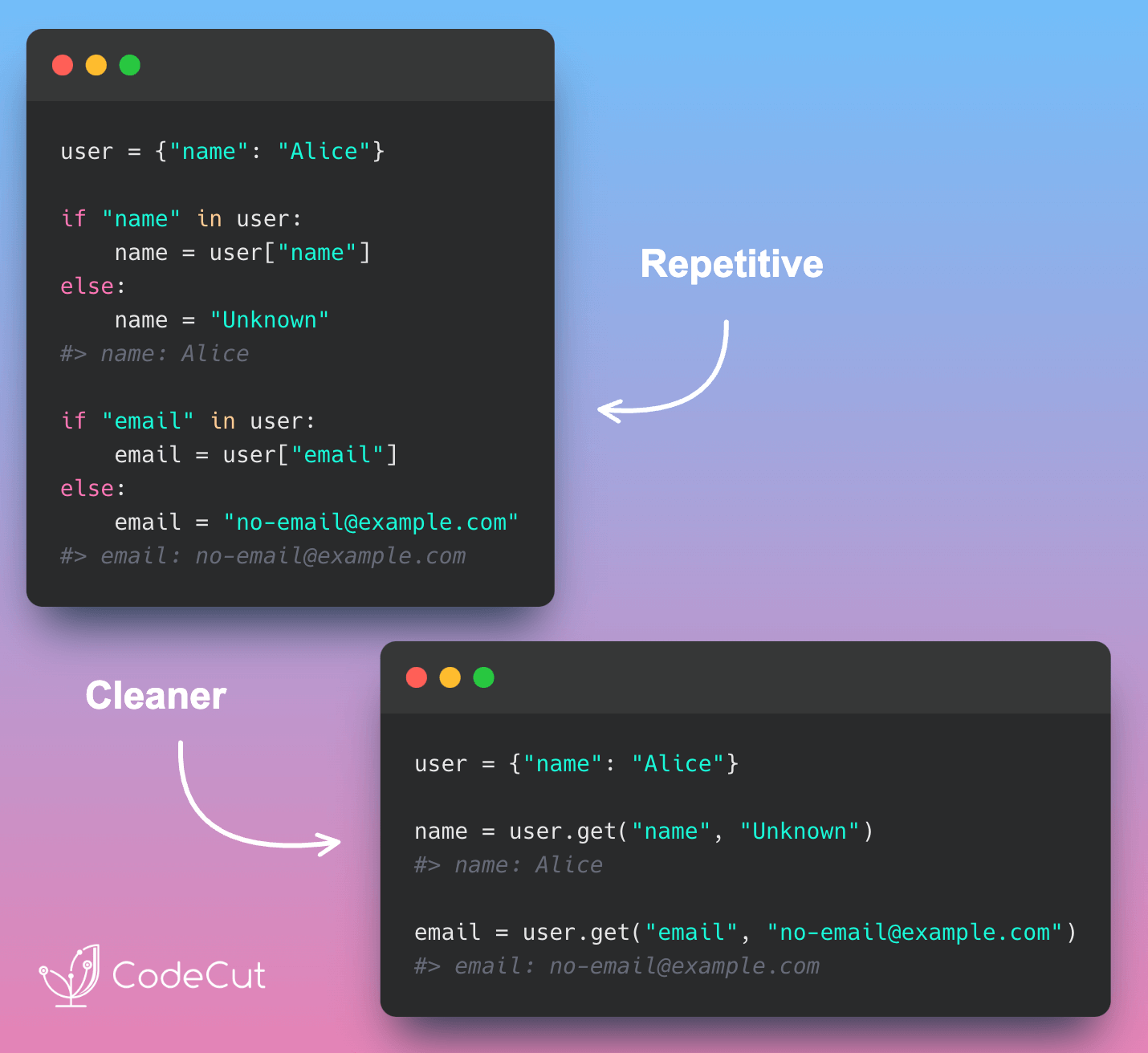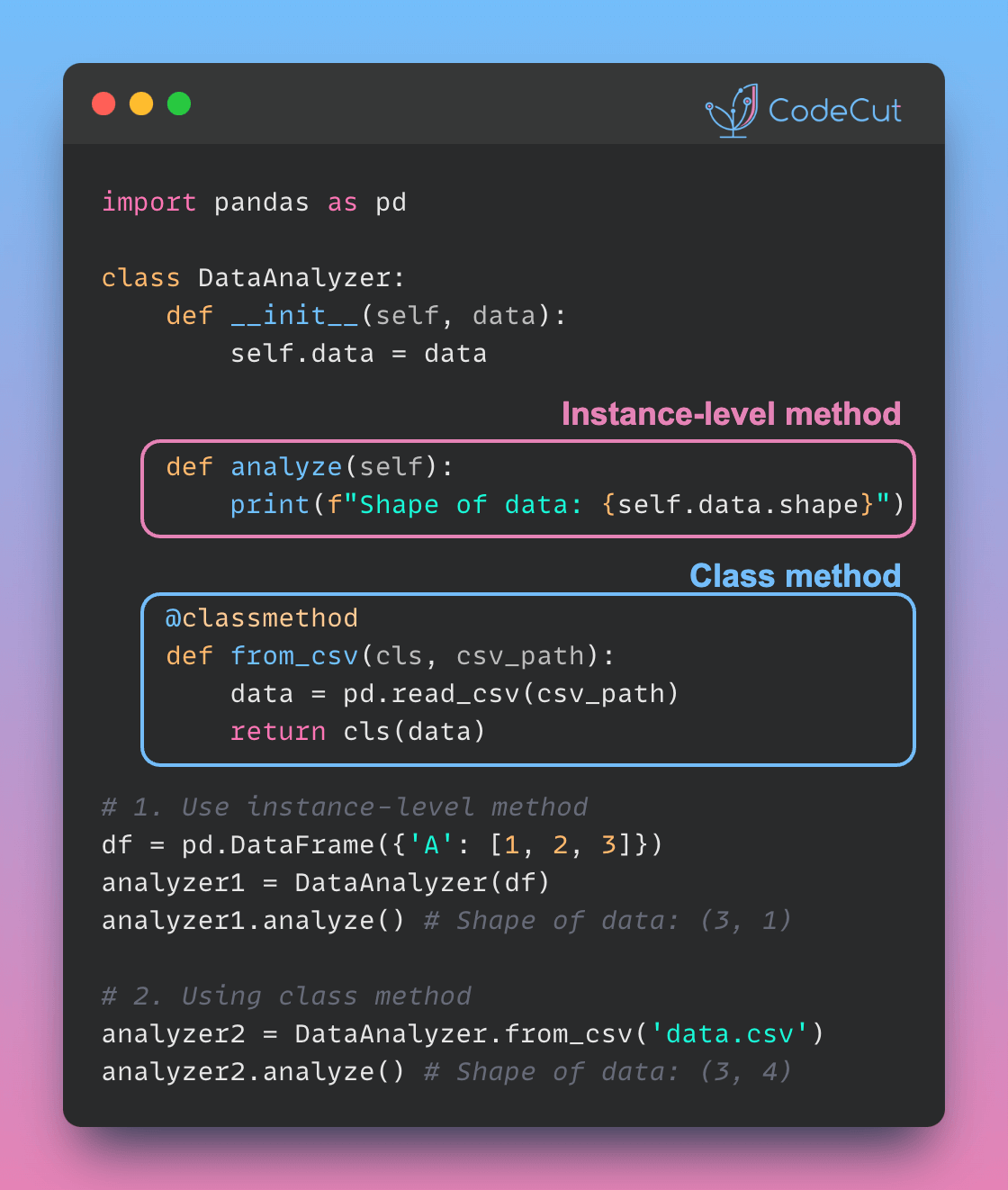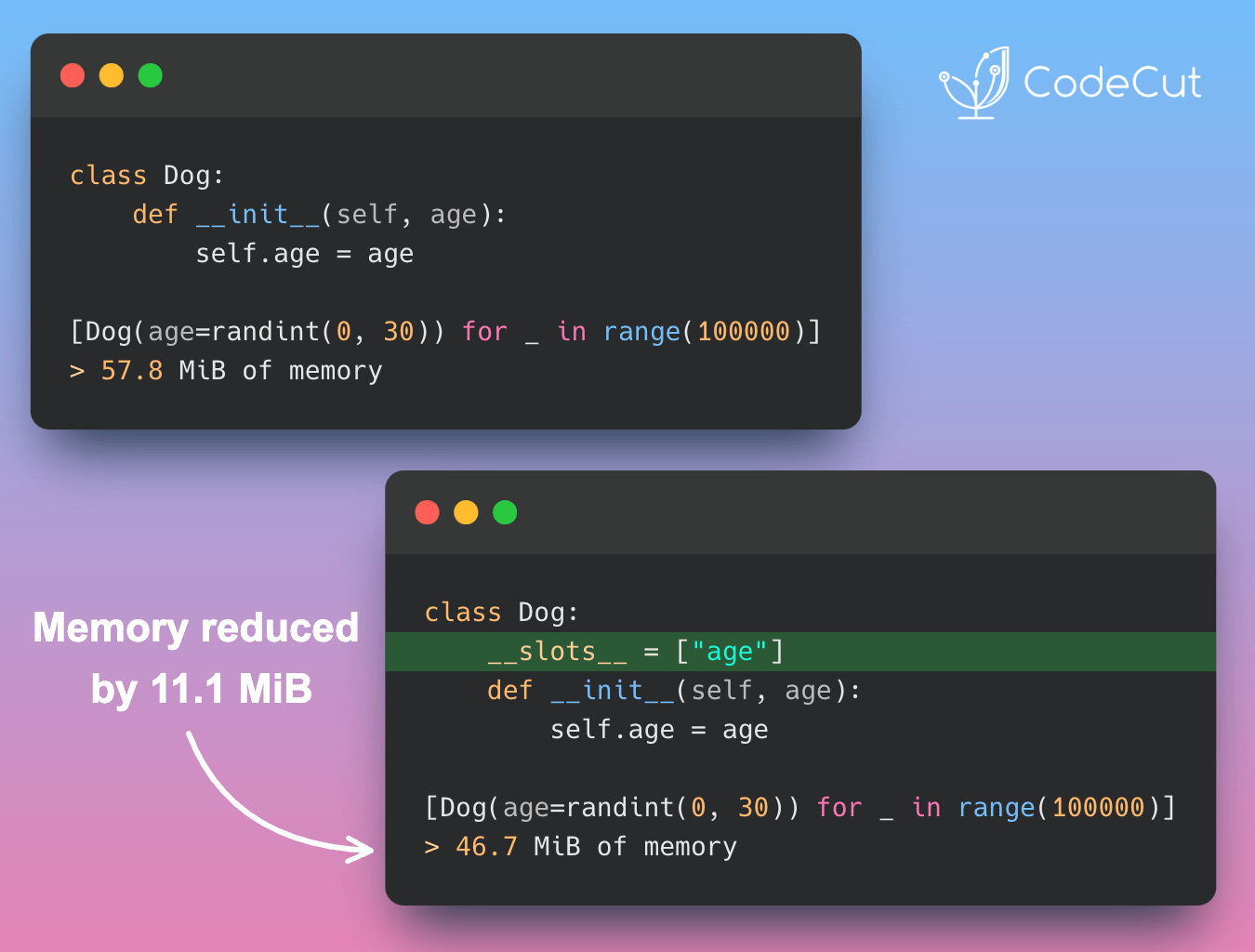The Problem with Multiple If-Else Statements
When working with Python dictionaries, you often need to access values that may not exist. The traditional approach of using multiple nested if-else statements can result in repetitive code that’s harder to maintain and more prone to errors.
Let’s consider an example where we have a dictionary user_data with keys “name”, “age”, and possibly “email”. We want to assign default values to these keys if they don’t exist.
# Checking dictionary values with multiple if-else
user_data = {"name": "Alice", "age": 30}
# Repetitive code with multiple default values
if "name" in user_data:
name = user_data["name"]
else:
name = "Unknown"
if "age" in user_data:
age = user_data["age"]
else:
age = 0
if "email" in user_data:
email = user_data["email"]
else:
email = "no-email@example.com"
print(f"{name=}")
print(f"{age=}")
print(f"{email=}")Output:
name='Alice'
age=30
email='no-email@example.com'As you can see, this approach is tedious and prone to errors.
A Cleaner Approach with the .get() Method
With the .get() method, we can access dictionary values with default values in a single line of code. This approach is not only more concise but also more readable and maintainable.
# Using .get() method for cleaner code
user_data = {"name": "Alice", "age": 30}
# Concise way to handle missing values
name = user_data.get("name", "Unknown")
age = user_data.get("age", 0)
email = user_data.get("email", "no-email@example.com")
print(f"{name=}")
print(f"{age=}")
print(f"{email=}")Output:
name='Alice'
age=30
email='no-email@example.com'Conclusion
In conclusion, the .get() method is a powerful tool for simplifying dictionary value access with default values. By using this method, you can write more concise, readable, and maintainable code.





